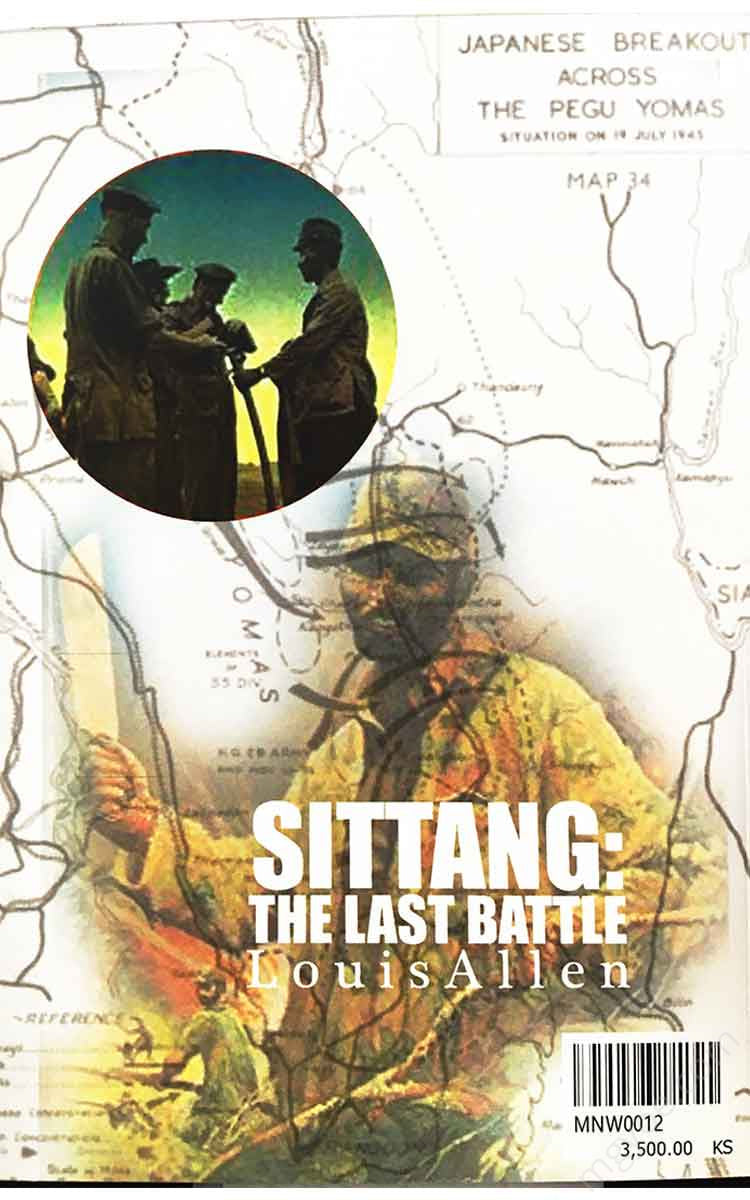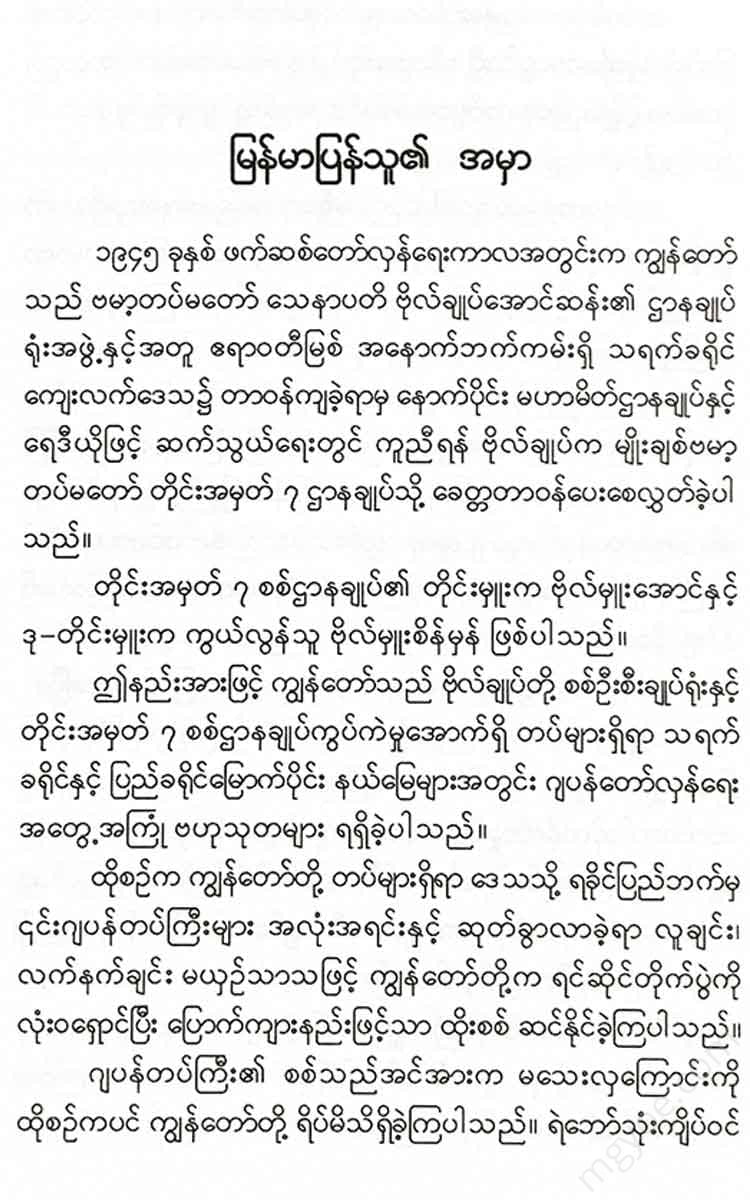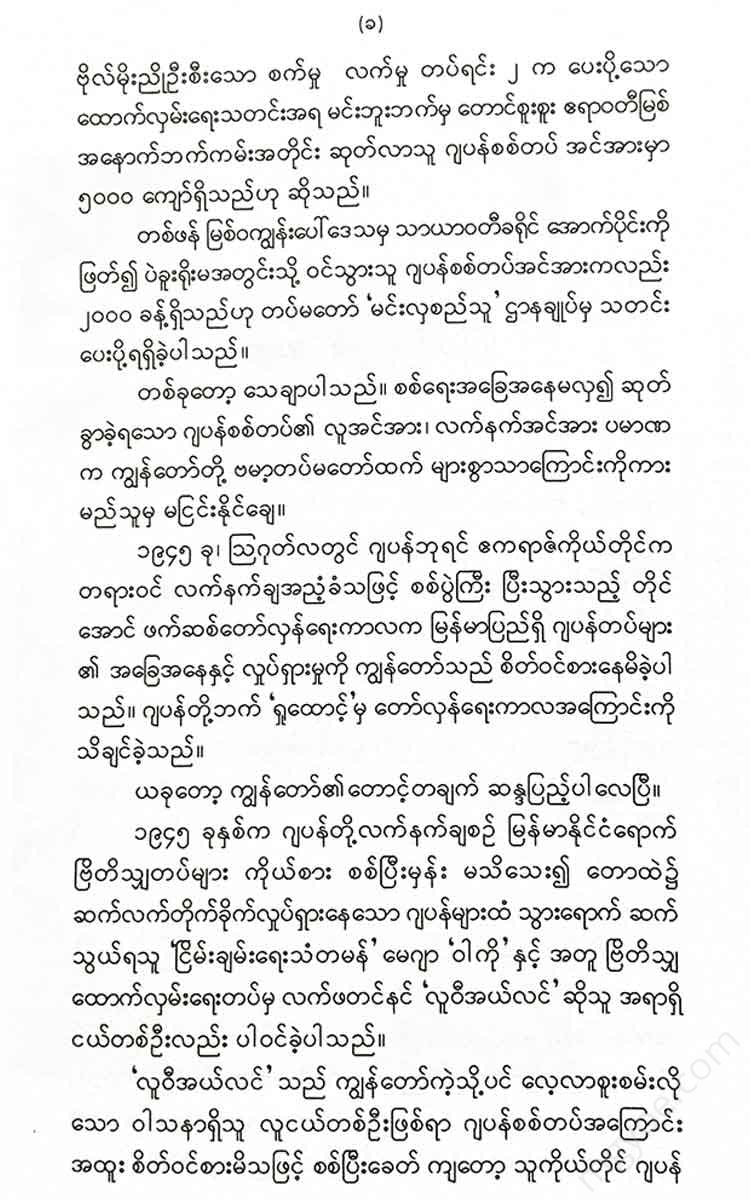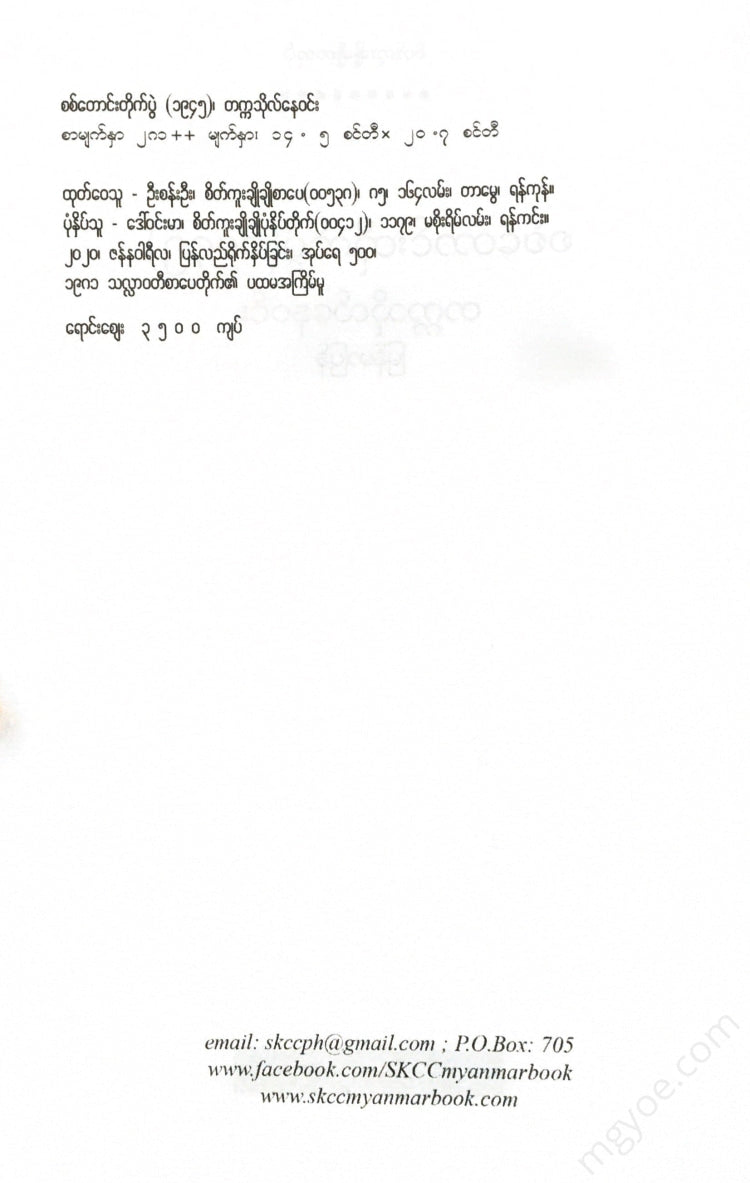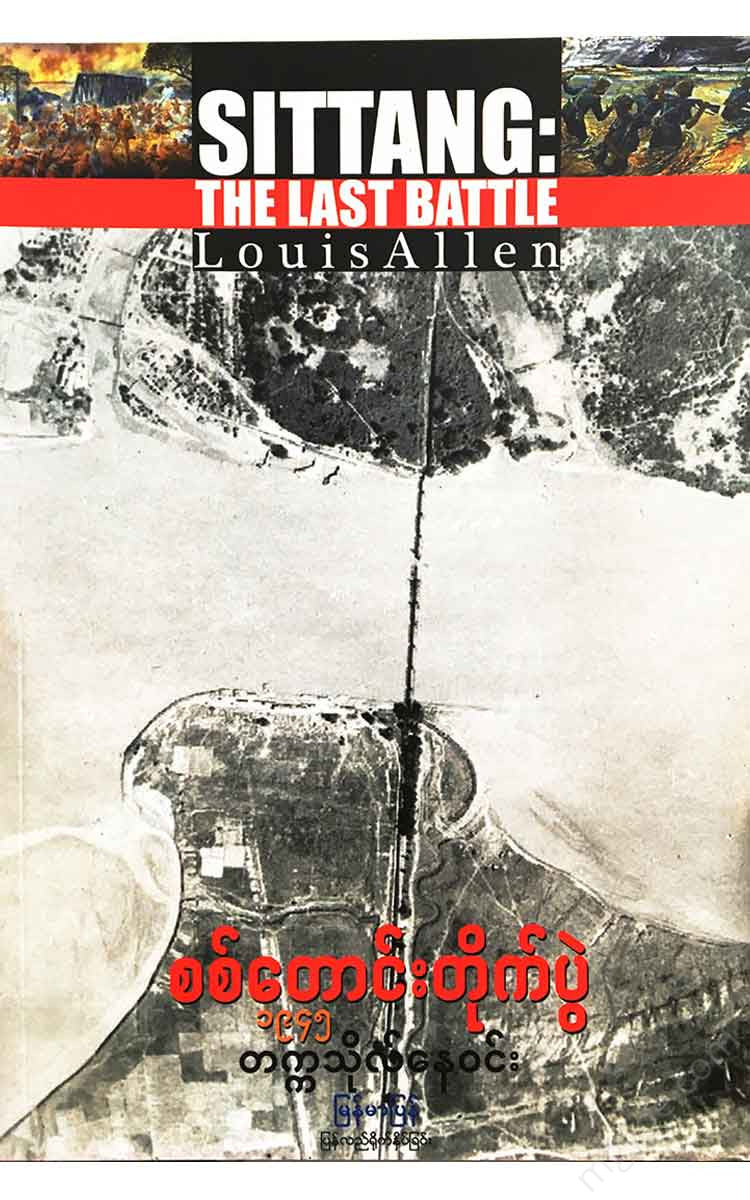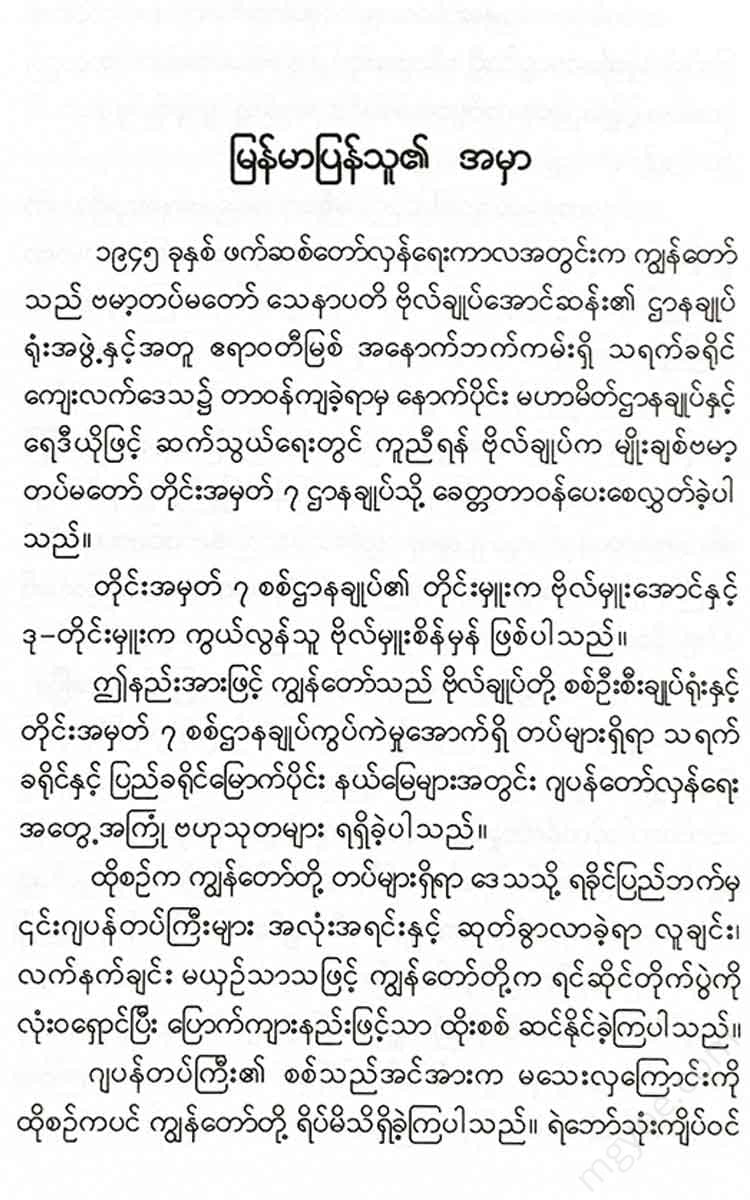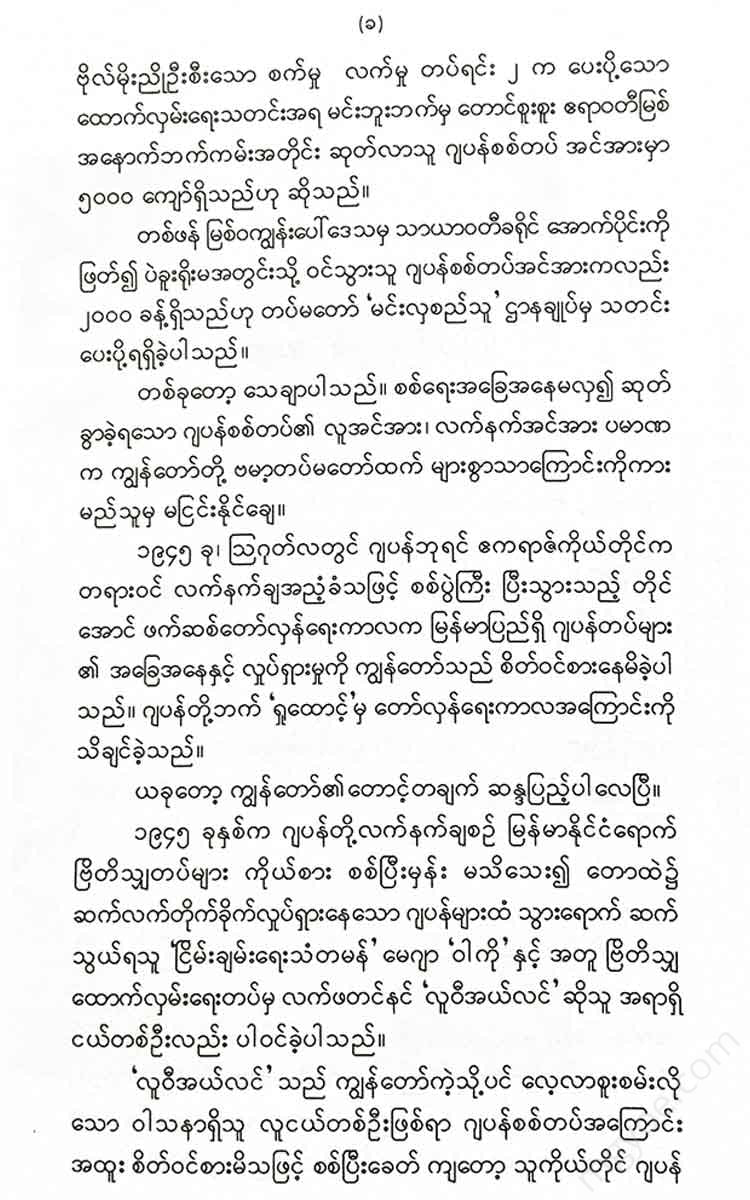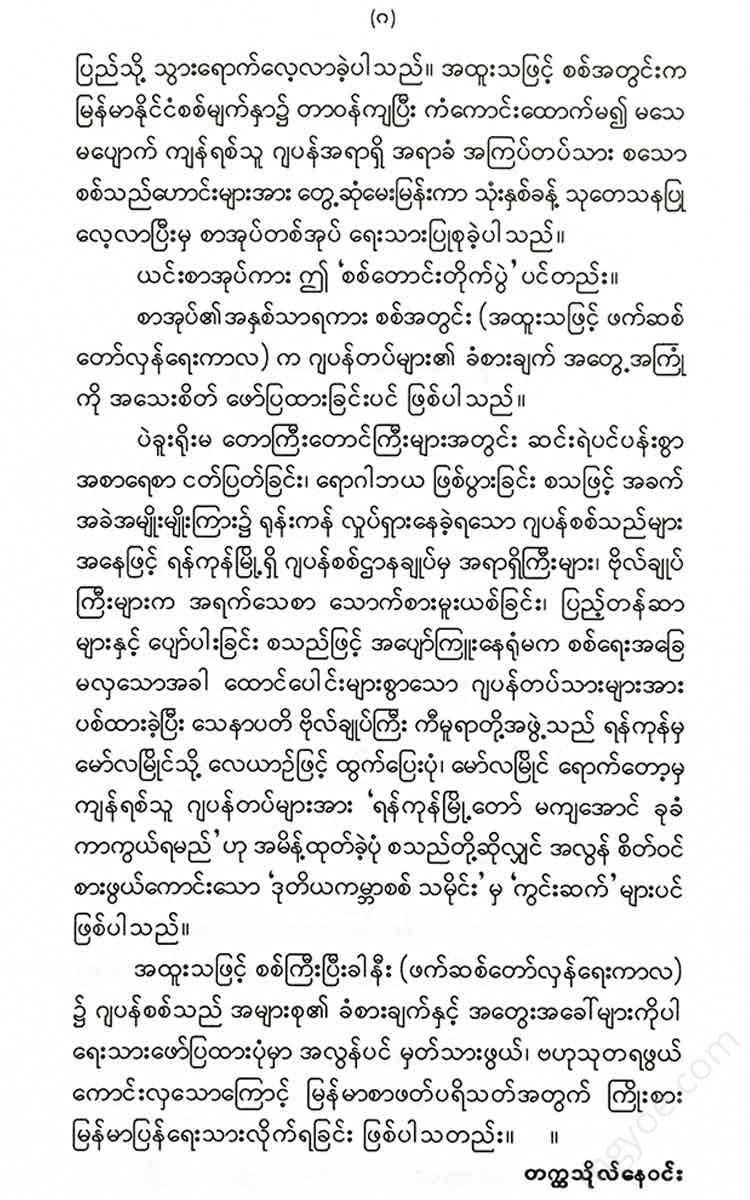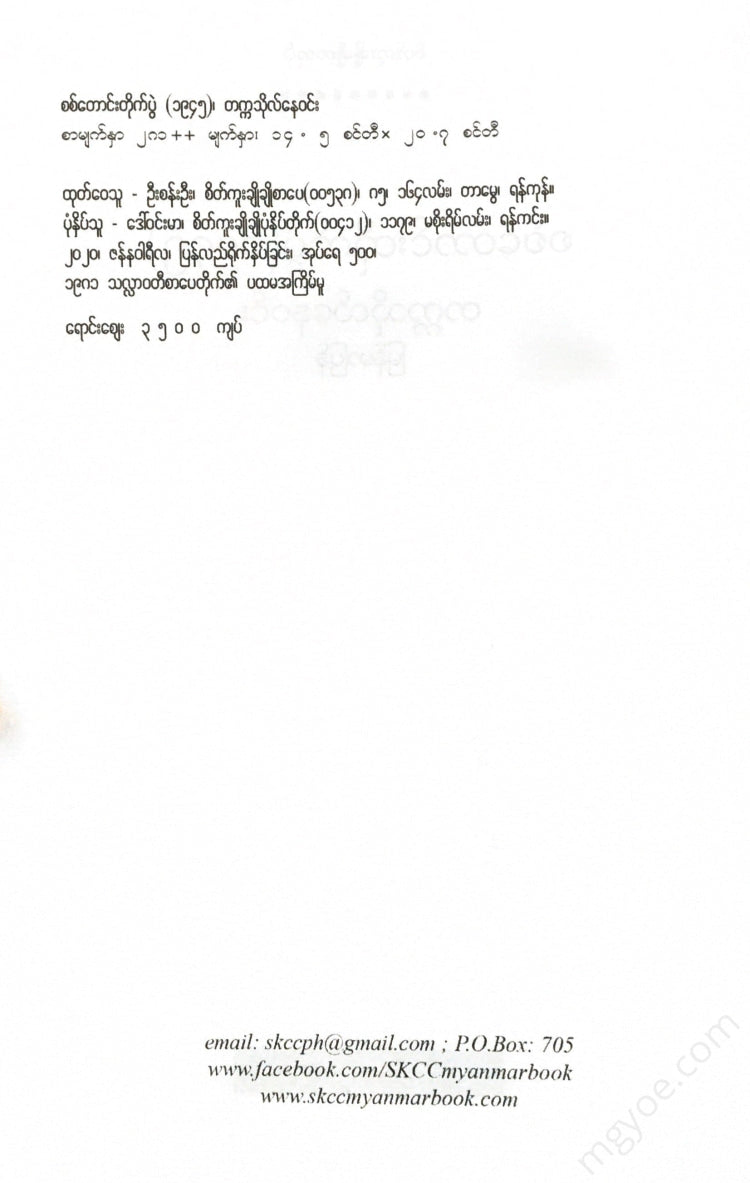စိတ်ကူးချိုချိုစာပေ
University Ne Win - Sittaw Battle
University Ne Win - Sittaw Battle
Couldn't load pickup availability
Chapter 1
Existing forces
The Japanese armies that arrived in Burma during World War II were the 15th, 28th, and 33rd Armies.
The Burma Area Army, which covers the entire country, is commanded by General Kimura and is headquartered in Yangon.
The Burmese army was under the command of Field Marshal Terauchi, Commander-in-Chief of the Japanese forces in the South, based in Saigon.
Located below. In turn, all Japanese forces in the southern region of Saigon were commanded by the Imperial Armed Forces Headquarters in Tokyo.
Among the major Japanese armies in Burma, the 15th Army suffered a crushing defeat in its attempt to invade India in 1944, and the 33rd Army was defeated in battles along the Irrawaddy River in 1945, forcing the Japanese to abandon upper and central Burma.
By the spring of 1945, Rangoon itself had fallen to the British, and the Japanese 15th and 33rd Armies were retreating towards Tanintharyi. | In order to prevent the Japanese troops from closing in on Rakhine, the Japanese 28th Army decided to cross the Irrawaddy River and hide in the Bago Yoma mountains. From there, they would break through the British and Allied forces, cross the Sittaung River, and join the remaining Japanese forces on the east bank.
This is the situation at the beginning of the contents of this book.
No. 28 Army
The main purpose of the formation of the Japanese 28th Army was to reinforce the left wing of the Japanese invasion of India in 1944. The direct attack on India through the Chin Hills was to be led by the Japanese 15th Army, commanded by Lieutenant General Mukeguchi. The objective of the operation was to capture Imphal, the capital of Manipur, where the British 4th Army was based. From there, Mukeguchi's 15th Army would advance to the Brahmaputra River Valley. It was hoped that if news of the Japanese advance spread, the already disaffected Bengali population would rise up against the British government and welcome the Japanese troops.
This is exactly what the Japanese had planned, as expected.
The Japanese 15th Army was advancing through the Chin State region of northwestern Burma, and needed to be protected from the left flank. The Japanese 28th Army was formed to prevent a British naval attack on the Rakhine coast and an invasion of Rakhine through Chittagong.
The 28th Army consisted of three divisional corps: the 2nd, 45th, and 55th Corps. However, the 2nd Corps was later transferred to central Burma and then permanently transferred to French Indochina, so it is not relevant to the events of this book.
Only two corps, the 54th and 55th, are primarily involved in the history that will be described here.
In addition to the above-mentioned corps, the Japanese 28th Army was also reinforced with other units.
The Japanese Navy also assisted the 28th Army in monitoring the enemy's approach from the sea along the Rakhine coast.
The Japanese 13th Fleet, commanded by Admiral Tanaka Raizo, was tasked with assisting and protecting the Japanese 28th Army. Admiral Tanaka Raizo was known for his combat skills in the Southwest Pacific.
His naval headquarters was located in Yangon, and two Japanese naval forces were stationed in Yangon and Taunggyi.
The task of the naval forces was to guard the Burma Sea coast from enemy ships and to detect and clear the foam bombs that the British had planted in the rivers. Each Japanese naval force consisted of about 600 men and consisted of only small warships, including torpedo boats.
In the spring of 1945, the Japanese forces in Rangoon were reorganized into the 105th Combined Brigade, headquartered at Yoma, Bago. They continued to operate under the command of the 28th Japanese Army.
Of the 28 Japanese armies, the most experienced unit in Myanmar was the 55th Division. Most of the soldiers in this division were from the Japanese island of Shikoku.
It was this same 55th Corps that invaded Burma through Thailand in 1941 and forced the British 17th Corps to retreat.
In early 1942, as the Japanese 33rd Corps advanced towards Rangoon and captured it, the 55th Corps advanced north from the Sittaung River front and attacked Chinese soldiers.
The Chinese troops were the Chinese troops sent by the Chiang Kai-shek government to reinforce the then-defeated British forces.
Chinese troops entered from the north and advanced as far as Taungoo, but the Japanese 55th Corps was able to quickly attack and defeat the Chinese, easily capturing Mandalay and successfully occupying the entire northern part of Burma.
When Lieutenant General Sakurai-Shozo assumed command of the 28th Army, he was already well aware of the 55th Division and the situation in Burma.
Because he personally commanded the Japanese 33rd Corps that invaded Burma in 1942.
"Sakurai-Shozo"'s military service was no less.
As a young officer, he served as a military attaché at the Japanese embassy in France, and also served as an officer in the Japanese War Department in Tokyo during the Japanese-Chinese conflict.
After the capture of Rangoon in March 1942, Sakurai Shozo became the chief of the Mechanized Forces Department at the Tokyo Military Headquarters.
Personally, he was a very honest and upright man, and his subordinates held him in high esteem. Among the Japanese generals in Burma, Sakurai-Shozo was known for his exceptional moral character.
For example, during the war, the commander of the Japanese 15th Army in Burma, "Mubaguchi," was known as a womanizer and a lustful man. Similarly, the commander of the 33rd Army, "Honda," would tell lewd stories whenever he felt like it.
Regarding General Sakurai-Shozo, Lieutenant Colonel Saito of the Japanese 55th Division said:
"The moral character and appearance of General Sakurai-Shōzō are reminiscent of Mount Fuji."
I have noted.
On January 18, 1944, Major General Iwakuro-Hideo arrived as the Chief of Staff of the 28th Army. Major General Iwakuro-Hideo was no stranger. He was also known as one of the most capable Japanese military officers in Burma. It was Iwakuro-Hideo who drafted the Japanese military policy document during the invasion of Manchuria in 1932.
In 1941, some American missionary leaders, through the US Postmaster General "Janes Walker", met with some Japanese soldiers.

